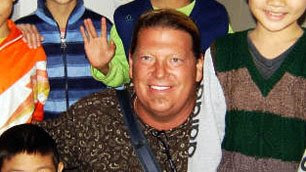- By: WICHIT CHANTANUSORNSIRI and AMORNRAT MAHITTHIROOK
- Published: 23/01/2009 at 12:00 AM
- Newspaper section: News
Korn says rescue subject to proper rehab plans
Thai Airways International will need to devise a convincing and comprehensive long-term rehabilitation plan before it can expect help from the government, Finance Minister Korn Chatikavanij said yesterday.

The Finance Ministry's tough stance towards the national carrier comes as it struggles to deal with serious financial problems and is seeking a cash injection to shore up its liquidity.
THAI's recent performance has been poor because of fuel hedging obligations and the closure of Suvarnabhumi and Don Mueang airports late last year. It badly needs backing from the Finance Ministry, which holds a 51% stake in the airline.
Assistance could come in the form of a ministry guarantee on loans the airline is seeking from state and private financial institutions.
The ministry is preparing up to 200 billion baht to lend to state enterprises that need to maintain liquidity. The plan is expected to be approved by the cabinet on Feb 3.
A share of the money could be an option for the troubled airline.
THAI said in a statement yesterday it needed 19 billion baht to resolve its liquidity problem this year.
"THAI also plans to raise 15 billion baht to replace its existing short-term borrowings," it added.
Mr Korn said: "The Finance Ministry, as the major shareholder, wants to see a plan that will lead to the financial sustainability of the company and have long-term effects."
He said he wanted a solid plan that addresses its long-term operations and is not just a band-aid solution.
Problems identified by Mr Korn which THAI needs to tackle include cost saving, improvement in operations and route adjustments. The airline's plan is expected to reach the ministry within a few weeks.
He said THAI should learn how to manage itself as the global economic crisis and recent exorbitant fuel prices had affected all airlines.
The plan must be good enough to convince shareholders and the general public, he said, and solve problems at their root, he said.
Mr Korn's demand echoes the view of Transport Minister Sopon Zarum, who supervises THAI.
He said a convincing rehabilitation plan would prove the national airline can spend money it borrows from creditor banks efficiently.
The minister stressed that to ensure any rehabilitation plan can be enacted professionally, THAI would need a board of directors capable of guiding it through the global economic crisis.
"The new board must consist of people who can devote themselves and their time to their work, because they are not going to be running the airline under normal conditions," Mr Sopon said.
"It is a time of crisis that has resulted from the global economic meltdown, situations within the company as well as the political problems and the recent airport closure."
He called on opposing factions within THAI to join forces to work for the good of the airline. Internal conflicts had obstructed the airline's operations, the transport minister said.
Mr Sopon said THAI staff deserve a united front because the airline does not want to retrench workers like its rivals.
While ruling out lay-offs, the minister conceded some staff would have to lose non-essential perks in the interest of their employer.
THAI said its liquidity problem should ease once the air travel industry shrugs off its sluggish phase.
"The liquidity shortfall maybe reduced if travel demand returns to normal sooner than forecast," it added. http://www.bangkokpost.com/news/local/10217/thai-runs-into-turbulence











 Sam Ouen
Sam Ouen

